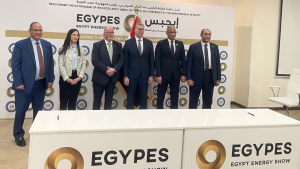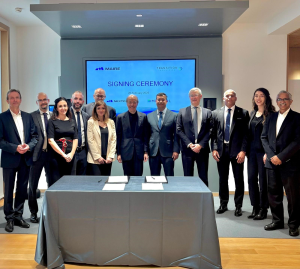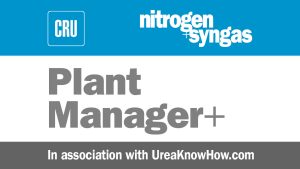
Reducing wear during size reduction
Ian Hancock, Vice President Sales and Operations, Bradley Pulverizer Company, offers expert advice on how to reduce wear during phosphate size reduction.

Ian Hancock, Vice President Sales and Operations, Bradley Pulverizer Company, offers expert advice on how to reduce wear during phosphate size reduction.

Prayon’s Marc Sonveaux outlines how chemical beneficiation can transform current phosphate industry supply chains.

MOPCO has selected thyssenkrupp Uhde to supply advanced technology for its Damietta ammonia-urea complex in Egypt.

Fertilizer International presents a global round-up of phosphate rock, phosphoric acid and finished phosphates projects.

NextChem (Maire) is awarded a three-year engineering and technology services contract by Satorp in Saudi Arabia to improve energy efficiency and carbon footprint

NEXTCHEM (MAIRE) AWARDED A LICENSING CONTRACT BY TRANSITION INDUSTRIES FOR A 2.1 MILLION TONS PER YEAR ULTRA-LOW CARBON METHANOL PLANT IN MEXICO BASED ON ITS PROPRIETARY NX ADWINMETHANOL® ZERO TECHNOLOGY NEXTCHEM’s proprietary NX AdWinMethanol® Zero offers an innovative process combining cutting-edge solutions to minimize carbon emissions, thanks to its autothermal reforming (ATR) technology The plant […]

Days 2 and 3 of the CRU’s 38th Nitrogen+Syngas 2025 Expoconference turned to the technical sessions, organised in three parallel streams covering: green ammonia technology, nitric acid and ammonium nitrate, plant operations and reliability, urea technology, digitalisation, carbon capture, emissions reduction and sustainable fertilizer production, and fertilizer finishing.

6th February, 2025 Johnson Matthey (JM) – a global leader in sustainable technologies – and Bosch a leading supplier to the automotive industry – have today agreed terms to accelerate future projects together. The agreement confirms both parties’ intentions to develop and produce catalyst coated membranes (CCM) for use in fuel cell stacks. Transforming and […]

In Part 4 of this series on stripper efficiency issues, we continue to look at the causes of lower stripper efficiency with a discussion on the high delta-P range of liquid dividers.

Blue hydrogen has emerged as a crucial technology for decarbonisation as nations around the world work towards net-zero carbon targets. By decarbonising hydrogen production and exploring clean hydrogen sources we can fully harness the potential of hydrogen in the global energy transition. Johnson Matthey, Topsoe and Casale report on their strategies and advanced technical solutions for large scale blue hydrogen production.